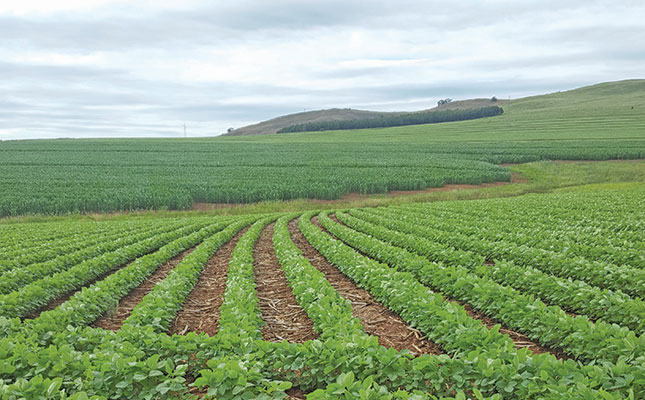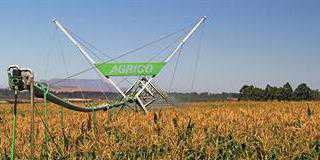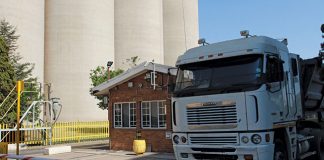
Photo: FW Archive
As the world grapples with climate uncertainty and dwindling, increasingly costly resources, the urgency of finding solutions to these problems is intensifying.
Added to this is the delicate balance between producing enough healthy food to feed the population, protecting the environment, and ensuring that farming remains profitable. How these factors are addressed over the next few years will determine the success or failure of countless thousands of farmers worldwide.
The drive towards implementing farming practices that do not harm the environment intensified in 2021, and is set to grow. Societal pressure and the EU Green Deal will have far-reaching consequences, pushing the entire agriculture sector to adapt to its demands.
Will South Africa be able to react to this trend?
As far as crop protection goes, we can expect to see a turnaround in integrated pest management (IPM) solutions, as farmers will have to make do without their usual arsenal of chemicals.
Rod Bell, CEO of CropLife South Africa, explains that current trends in agriculture all point towards employing an array of strategies and methods of pest control instead of just one.
“It means a mind shift towards managing pests, not just eliminating them, and using pesticides only when absolutely necessary. If the past year is anything to go by, we’re likely to see further strides made towards IPM in the coming year.”
The potential impacts of the EU Green Deal, both negative and positive, are still being explored in the EU as well as its trading partners, including South Africa. But whether or not this country is able to deal effectively with these changing policies remains to be seen.
According to Bell, the ability of local regulators to approve the use of new technologies that will enable farmers to continue growing produce for export will largely determine whether or not these sectors will continue to flourish.
The plant science industry, he notes, has provided farmers with many tools to grow enough food, both sustainably and in an environmentally compatible manner. These include synthetic chemistry, biologicals, new breeding technologies or even application technologies.
“The solutions are there, [although] it’s not a one-size-fits-all package, because the crop pest situations around the world are vastly different.”
The problem, he stresses, is that the South African regulatory system governing new technologies and products is so far behind that farmers here are at a significant disadvantage compared with those elsewhere who have these solutions available to them.
“This is a very serious threat, not only to our producers’ livelihoods, but to national food security. In fact, it’s probably more of a threat than any foreign policy on South African agriculture.”
Biofuels on the rise
The World Bank Commodity Markets Outlook predicts that the production of biofuels will increase in 2022. This could affect several food commodities, notably sugar cane and maize for ethanol production, and edible oils for biodiesel production. Analysts have forecast that by 2029, 25% and 14% of global sugar cane and maize output respectively will be used for ethanol.
Although Brazil, the EU and the US account for more than two-thirds of global biofuel production, the share of Asian producers has been growing, reaching 30% in 2020, up from 13% a decade ago. According to some estimates, global biofuel production could increase as much as 50% during the next five years.
While South Africa’s contribution to biofuels is negligible, the trend has a major impact on maize prices, increasing grain farmers’ profitability, while the meat industries and those reliant on buying feed are feeling the pinch.
Moreover, if current production estimates materialise, food prices could increase further, given that an additional 2% of world agricultural land would need to be allocated to biofuel crops.
Prof Ferdi Meyer, managing director of the Bureau for Food and Agricultural Policy, says that a biofuel-blending mandate of 10% or more would have an enormous impact on global grain markets.
“At present, the world doesn’t have enough grains to supply both the food and fuel markets, so the result would be an increase in [food] prices. We therefore don’t expect global grain prices to come down from their current highs during the next year or two, even as farmers move towards planting more.”
The outlook states that most of the world’s biofuel production is possible because of policy mandates. However, if crude oil prices continue to increase, biofuel production from some crops could become profitable, in which case energy prices could act as a floor for the prices of food commodities.
Online convenience
A trend that is likely to increase in 2022 is agribusinesses’ adoption of digital services for farmers. COVID-19 lockdown restrictions triggered a move towards online marketing platforms, and now that the sector has familiarised itself with the convenience of these services, they are expected to grow.
Niki Neumann, general manager of strategic innovation at AFGRI, says that new online business models and trading platforms will drive collaboration and efficiency across the supply chain.
“This includes platforms like HelloChoice, an online marketplace for the trading of fresh produce, and Axl, which provides a new way for equipment owners to put their idle machines up for rent and add revenue lines to their businesses.
“The latter overcomes the problem of high capital investment, because farmers can rent equipment rather than buy it. These platforms therefore present an opportunity for new business models and services, breaking down barriers and opening up access for farming businesses.”
Neumann adds that the need to build a strong agricultural ecosystem that reduces service disruption and creates better transparency will lead to the greater availability of digital and online services.
“Technology is a business enabler, not [a business] solution, so it should always provide increased flexibility, profitability and convenience for farmers. Anything that addresses these needs will grow.”
Big data
The move towards precision agriculture will be boosted by big data, as greater insights will be realised by the sheer scale of information being collected on every front in agriculture.
Big data provides farmers with comprehensive information on rainfall patterns, irrigation cycles, fertiliser requirements, and market movements.
This enables them to make informed decisions, such as which crops to plant for better profitability, when to apply inputs and how much, and when to harvest. The right decisions ultimately improve farm yields.
Neumann explains that data collection will expand to include connected devices and sensors on the farm and automated labour and financial management software. “The more data we produce in the industry, the more quality insights [we gain], and the more we learn.
Farmers can use these insights to drive the efficiency of their farming operations, advance decision-making and increase transparency for farm owners and stakeholders.”
Alternative financing and funding approaches by large financial institutions will also benefit from big data. Neumann says that emerging technologies and the growing availability of quality agricultural data, such as yield mapping and satellite insights, have advanced over the past five years and can now be used to build customised and increasingly accurate risk assessment models for farming.
“Ideally, once fully developed, these models will break down the barriers to financing and unlock new ways to finance farming businesses of different sizes. Access to capital is a key challenge for farmers, especially those who are just starting out.”
She advises producers to embed technology solutions into their operations and budget for technology assets and information services in their businesses.
“Test the services that work for your specific business needs, keeping in mind that often the simplest solution is the best one.”
More bang for your buck
The trend of producing more with less has continued over the past few years, and it is set to grow in leaps and bounds. This applies particularly to reducing the amount of water and inputs needed to produce the same or even better yields.
An example is new technology developed by Israeli company SupPlant, which uses an advanced algorithm to analyse live data from plants, soil, and meteorology sensors, which it translates into irrigation recommendations and actionable insights.
Sensors are placed in five locations: fruit, leaves and trunk of the plant, and deep and shallow soil. They monitor plant stress, plant and fruit growth patterns, real-time and forecast weather conditions, and soil water content.
The software combines big data collected over 1 500 growing seasons with real- time and forecast insights to deliver irrigation recommendations. The result is crops that use less water, while producing higher yield.
Genetic advances
Development of desirable plant traits are also being hastened by the advent of gene editing, a much faster process than genetic modification. Bayer, for example, is working towards producing crops that require fewer inputs, either due to a dwarfing characteristic or embedded insect tolerance.
Short-stature maize, which is currently being commercially registered, has been
shown to provide the same yield as taller maize. But being shorter, the plant requires less energy and fewer inputs to grow, and is less susceptible to green snap and stalk lodging.
This reduces crop loss caused by harsh environmental conditions and extreme weather, including high winds.
Liza Bohlmann, media spokesperson for Bayer Crop Science in South and East Africa, says that advances in insect-protection traits have reduced the need for foliar insecticide applications and increased productivity per hectare.
“Bayer’s ThryvOn Technology will meet an important need in the cotton market and
is predicted to help improve [pest] control and reduce insecticide use. This is the first biotechnology trait introduced for piercing and sucking insects; it supports healthy plant growth and helps to protect yield potential against pests that, until now, couldn’t be managed through a biotech trait.
“This all aids our goal of providing solutions that use fewer inputs to produce the same or even more food per hectare.”
Email Rod Bell at [email protected], Prof Ferdi Meyer at [email protected],Niki Neumann at [email protected], or Liza Bohlmann at [email protected].











